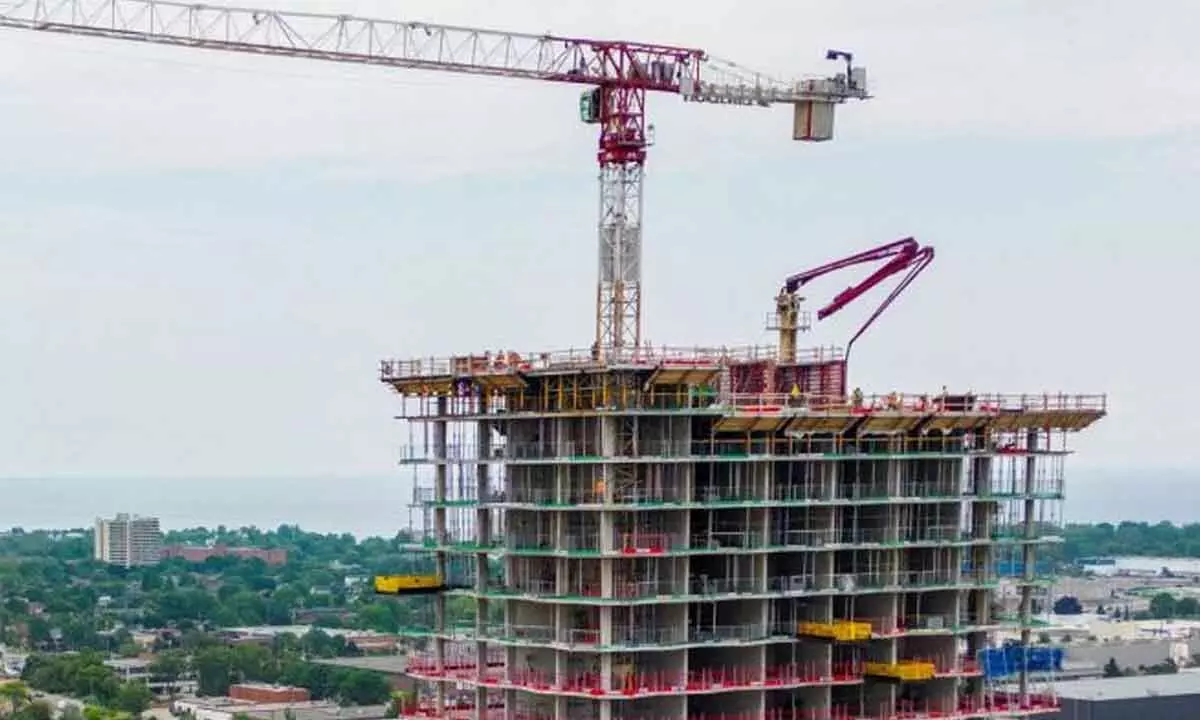Real estate insolvency resolution on the rise, but challenges remain
Share of real estate in recoveries under IBC up 18.8%
image for illustrative purpose

Real estate sector on a reported basis accounted for more than 50 per cent of the total realizations under Insolvency and Bankruptcy Code (IBC). However subsequent to release of data by Insolvency and Bankruptcy Board of India (IBBI), a large key case went sub-judice following admission of an appeal before the NCLAT resulting in real estate sector accounting for 18.8 per cent of total realizations under IBC. This compares very well to total realizations of 1.2 per cent in the period between its inception in FY17 to September 2022 as indicated in an earlier report.
Talking to Bizz Buzz, Aashiesh Agarwaal, SVP - research & investment advisory, Anarock Capital, said, “Increasing resolutions of stressed assets in the real estate sector is a positive as a large number of projects were stuck with little to look forward to. A pick up in resolutions has helped projects revive, helping homebuyers and lenders alike.”
There is also evidence of defaulting borrowers settling dues with creditors as they faced the prospect of losing control of their companies, fostering credit discipline of the industry, and thereby improving the bankability of the overall space. We are also looking forward to implementations of the recommendations by the Ministry of Corporate Affairs (MCA) and Ministry of Housing and Urban Affairs (MHUA) which is expected to further streamline recoveries in the sector, he said.
A committee constituted by MHUA recommended the project-wise Corporate Insolvency Resolution Process (CIRP) of real estate companies as opposed to company-wise CIRP. Further, it was recommended that necessary amendments be made to the enabling Resolution Professionals (RPs) to transfer the ownership and possession of sale units to the allottees while the CIR process is underway. Finally, the report recommended creation of 5 additional fast-track benches at the NCLT, to expedite the cases including real estate cases.
As of June 2023, according to the IBBI's quarterly newsletter, there were a total of 6,815 insolvencies admitted. Among these, approximately 21 per cent or 1,431 were related to the real estate sector. Out of the real estate insolvencies, around 495 cases were either settled, withdrawn, or appealed. Additionally, resolution plans were approved for nearly 94 cases, while approximately 382 cases were under liquidation. This adds up to a total of 589 cases that have been settled, withdrawn, appealed, or resolved in the real estate sector. Therefore, the percentage of resolved cases in the real estate sector, as of June 2023, is approximately 41.16 per cent.
Mani Gupta, Partner, Sarthak Advocates & Solicitor, said, “The resolution of insolvency in the real estate sector continues to be shrouded in complications. These are compounded by the fact that generally the committee of creditors comprises of majority home-buyers. The home-buyers often are unable to understand commercial nuances unlike banks and financial institutions who were originally intended to be part of the committee.” The recent legislative changes around the role of the authorised representative for creditors in class will hopefully mark a shift in the decision-making of the home-buyers and result in more streamlined decision-making, she added.
Shobhit Agarwal, MD & CEO, Anarock Capital says, “The total number of corporate insolvency resolution process cases filed has risen from an average of 208 in FY22 to average of 313 in FY23. FY24 however has commenced on a weak note with 238 cases admitted overall in the first quarter. Real estate cases have averaged about 18-20 in each quarter between October 2021 and December 2022. However, this jumped sharply in March 2023 to 44 corporate debtors being admitted into CIRP.”
Sudip Mullick, Partner, Khaitan & Co, said, “While CIRPs of real estate companies have increased in the last few quarters, it would be interesting to see how effectively these cases are resolved. Positive outcomes in the ongoing CIRPs of real estate companies would be the key to drive confidence of homebuyers and give a boost to the sector.”
Kumar Saurabh Singh, Partner, Khaitan & Co, added, “One of the key reasons for prolonged delay in resolution of insolvencies has been the large number of vacancies in the NCLTs. With a view to strengthen the bench, the government has recently appointed 21 members, which will take the bench strength closer to the sanctioned number of 63. This is expected to reduce the delays faced in the resolution of insolvent companies. However, it will be critical for the government to continue this momentum and ensure that vacancies are filled on time.”
There is now a proposal to bring all of them on the same platform which will lead to enhanced transparency, minimisation of delays, and facilitate more effective decision making, he said.
This calls for the development of a state-of-the-art electronic platform that can handle several processes under the Code, with minimum human interface. The national e-governance services, India’s first information utility, has also unveiled an insolvency case management system that assist insolvency professionals in seamlessly executing all CIRP and liquidation process-related tasks in a time-bound manner.
The report details the proposed amendments by MCA and the recommendations by MHUA, and also examines updates on several real estate companies undergoing CIRP or having completed CIRP. These include Jaypee Infratech, Unitech, Supertech, Lavasa Corporation, Amrapali, DS Kulkarni, Three C Homes, Radius Estates, and others.

